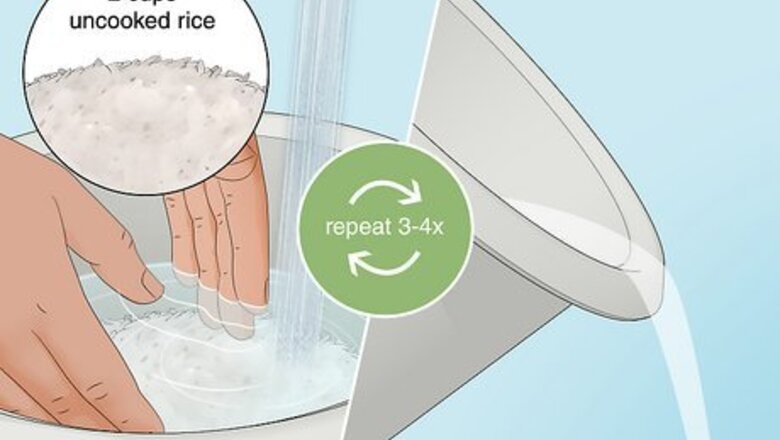
views
- Rinse 2 cups (400 g) of rice and steam the rice for about 30 minutes.
- Crush 1 wine yeast ball into a fine powder and mix it into the cooled rice.
- Place the rice and yeast mixture into an airtight container and store it at around 82ºF (28ºC) for 5 days.
- Ferment the rice wine for an additional 10-20 days before drinking it or using it for cooking.
Cooking the Rice
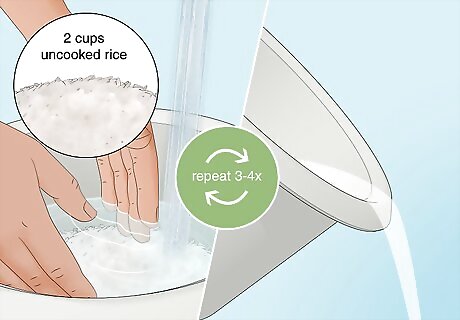
Rinse 2 cups (400 g) of rice. Measure out 2 cups (about 400 g) of uncooked rice into a large bowl. Completely submerge the rice in water and use your hands or a spoon to swirl the rice around and remove the starches. Drain the water and repeat this process 3 or 4 times until the water runs clear. Use sticky rice (also called “glutinous rice”), which is more authentic and creates a slightly sweeter flavor than regular white rice. The main difference between Shaoxing and sake is the type of rice being used. You usually use sticky rice for Shaoxing, but koji rice is most often used when making sake.
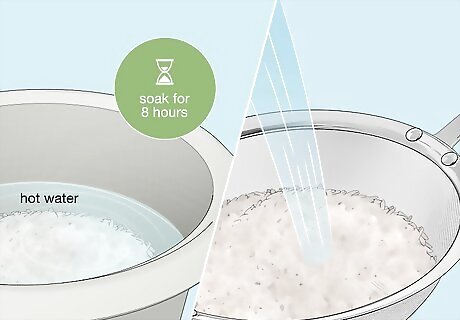
Soak the rice for about 8 hours. Soak your rice in hot water for about an hour, as sticky rice cooks better after it’s been soaked. Once 8 hours have passed, use a strainer or sieve to strain the rice and remove the water. The rice should break apart easily when you pinch it between your fingers.
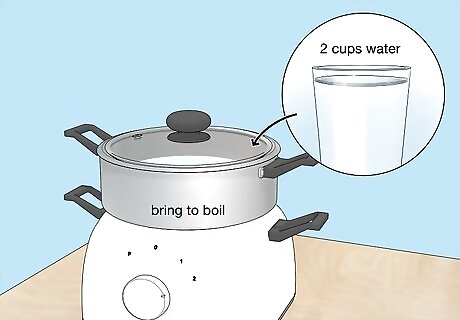
Boil 2 cups (473 ml) of water in a steamer or pot. Pour around 2 cups (473 ml) of water into the bottom of a steamer and bring it to a boil. If you don’t have a steamer, boil water in a medium-sized pot.
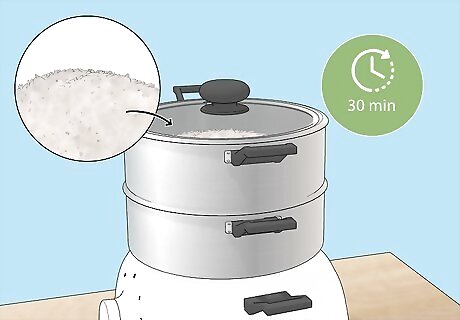
Steam the rice for about 30 minutes. Place the rice in the top compartment of a steamer and let it steam for at least 30 minutes. Press the rice down so it’s relatively flat and use a spoon or pair of chopsticks to poke holes in the rice. This helps with dispersing the heat and making sure the rice is evenly steamed. If you don’t have a steamer, place the sieve of rice above the boiling water, making sure that the rice doesn’t touch the boiling water. Cover the top of the sieve with a pot lid and steam for 30 minutes.
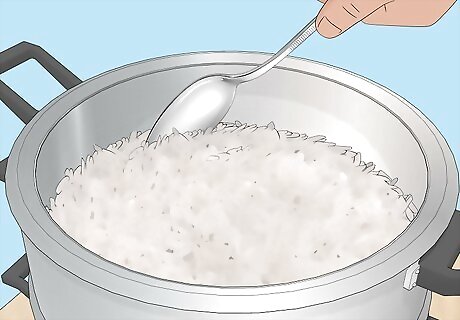
Check that the rice is fluffy and translucent after 30 minutes. Take the lid off of the steamer or sieve and taste the rice. If it’s still hard or slightly crunchy, use a spoon to flip the rice over and let it steam more, checking every 5 minutes to see if it’s done. Fully cooked rice is also translucent and glossy.
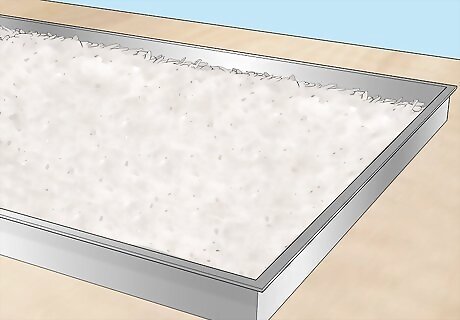
Spread the rice on a cooking sheet. Spoon the rice out onto a cooking sheet and spread it in a thin layer to help it cool. It’s essential to let the rice cool before beginning the fermentation process, and spreading the rice helps it to lose heat more rapidly.
Fermenting the Rice

Crush the wine yeast ball. Take the yeast ball and place it in a small bowl. Use a pestle or the bottom of a large spoon to crush the yeast ball until it turns into a fine powder. Another method is to put the yeast ball into a sealed plastic bag and use a rolling pin or something else heavy to crush it. If you can’t find a wine yeast ball, you can use 1 tsp (3.1 g) of instant yeast as a substitute. However, since the components of each yeast are different, your wine likely won’t turn out with the same flavor as it would using wine yeast. 1 yeast ball can ferment up to 500 g (about 2½ cups) of glutinous rice.
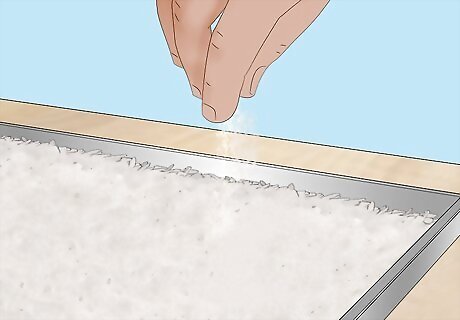
Combine the yeast powder and the rice. Sprinkle the crushed yeast evenly over the rice. Toss using your hands or a spoon to integrate and combine the yeast with the rice. Make sure that the rice has cooled and is just slightly warmer than room temperature.
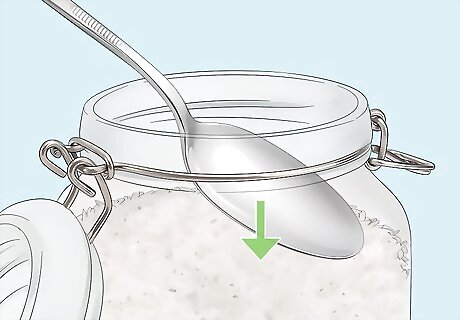
Place the rice in an airtight container to begin fermentation. Pack the rice in tightly using your hands or a spoon to press it down. If you don’t have any airtight containers, place your rice into a bowl and press it down until it’s flat and compact. Then, use a spoon or chopsticks to dig out a hole in the center. Cover the bowl with cling wrap and make sure there are no gaps or holes where air can get in.
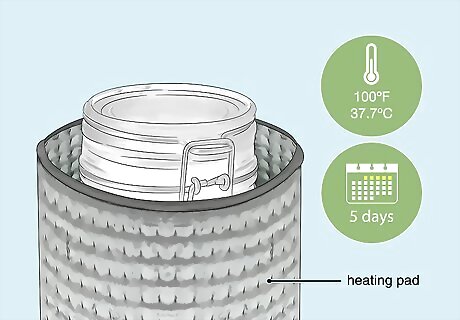
Store the rice in a warm place for 5 days. Keep the container of rice in the oven on low heat (100ºF or 37.7ºC), or simply place a heating pad around the jar. If you don’t have a heating pad, a towel, blanket, or another piece of cloth will work as well. The heat helps to encourage the process of fermentation. Keep the rice in a place that’s at least 82ºF (28ºC).
Testing the Rice Wine

Taste the wine after a few days. After a few days, you’ll notice liquid accumulating at the bottom of the container. This is the rice wine. The wine is ready to drink as soon as it forms, so feel free to try the wine as soon as you see it accumulating. If you like the taste, pour out the liquid from the container and keep the rice mixture inside. Use this small amount of wine you made for cooking, or simply drink it by itself. The taste of the wine changes the longer it ferments. When the wine first appears at the bottom of the container, it will taste fruity and slightly tangy. As you let the wine ferment, it becomes more sweet and smooth.
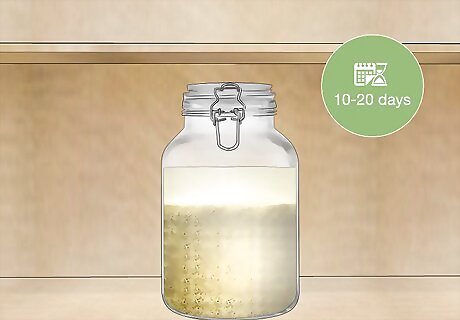
Continue to ferment the wine for 10 to 20 days. This period of time is called the secondary fermentation period. During this time, keep the rice in a place with a temperature between 50 and 59ºF (10 to 15ºC). You no longer need the oven or heating pad, so long as the temperature falls within this range. The longer you ferment your wine, the clearer and less cloudy it will become.
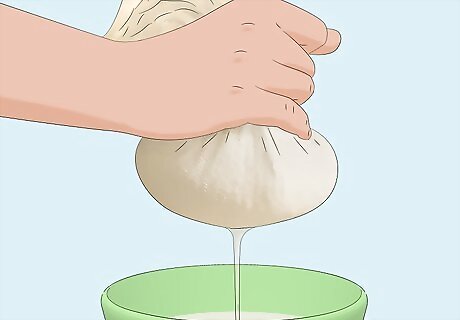
Strain the rice mixture. Use a piece of cheesecloth or a very fine strainer to strain the wine from the rice and collect the liquid in a jar or container. If you placed the rice in a cheesecloth, squeeze the cloth tightly to wring out as much liquid as possible. If you put the rice in a strainer, press down with your hands to get the wine out.
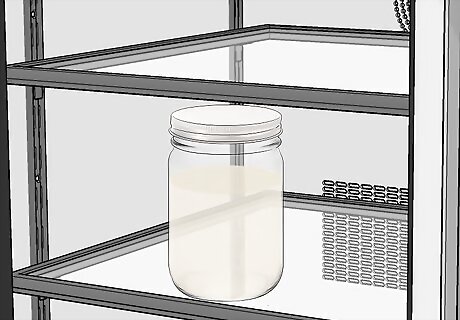
Place the container of rice wine in the refrigerator. Seal the top of your container and place it in the refrigerator. Although you can drink rice wine at room temperature, always store it in the fridge, as this will help it to last longer. Rice wine that’s stored at room temperature will last for about 6 months. When stored in the refrigerator, it can last up to 1 year.
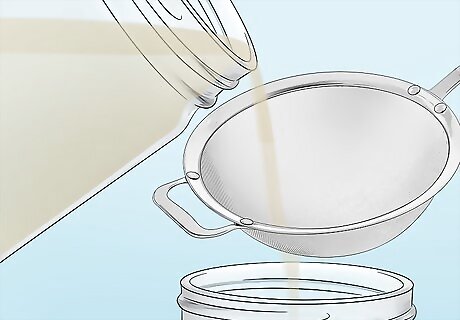
Remove the sediment at the bottom of the wine with a strainer. A few days after you put it in the refrigerator, a layer of sediment will form at the bottom of the wine container. It’s not necessary to remove this sediment, but some choose to do so to improve the appearance of the wine and make the texture of the liquid more uniform. Use a strainer to remove this sediment or just leave it at the bottom of the container when you pour the wine out.
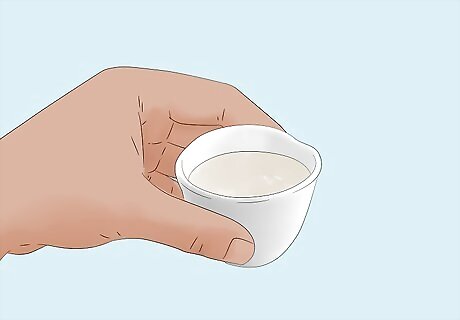
Enjoy your wine as a drink or use it for cooking. Use your wine for cooking a variety of savory and sweet dishes, drink it by itself, or keep it in the fridge to alter and mature the flavor. Don’t worry if you see the wine becoming darker the longer you age it; this is perfectly normal. Wine kept in the fridge will usually last for up to 1 year. If you don’t want to use your rice wine for cooking, dry sherry, mirin, or a dry white wine are all great substitutes for rice wine in many recipes. Rice wine’s alcohol by volume (ABV) is usually around 20%, so be sure to drink responsibly.
















Comments
0 comment